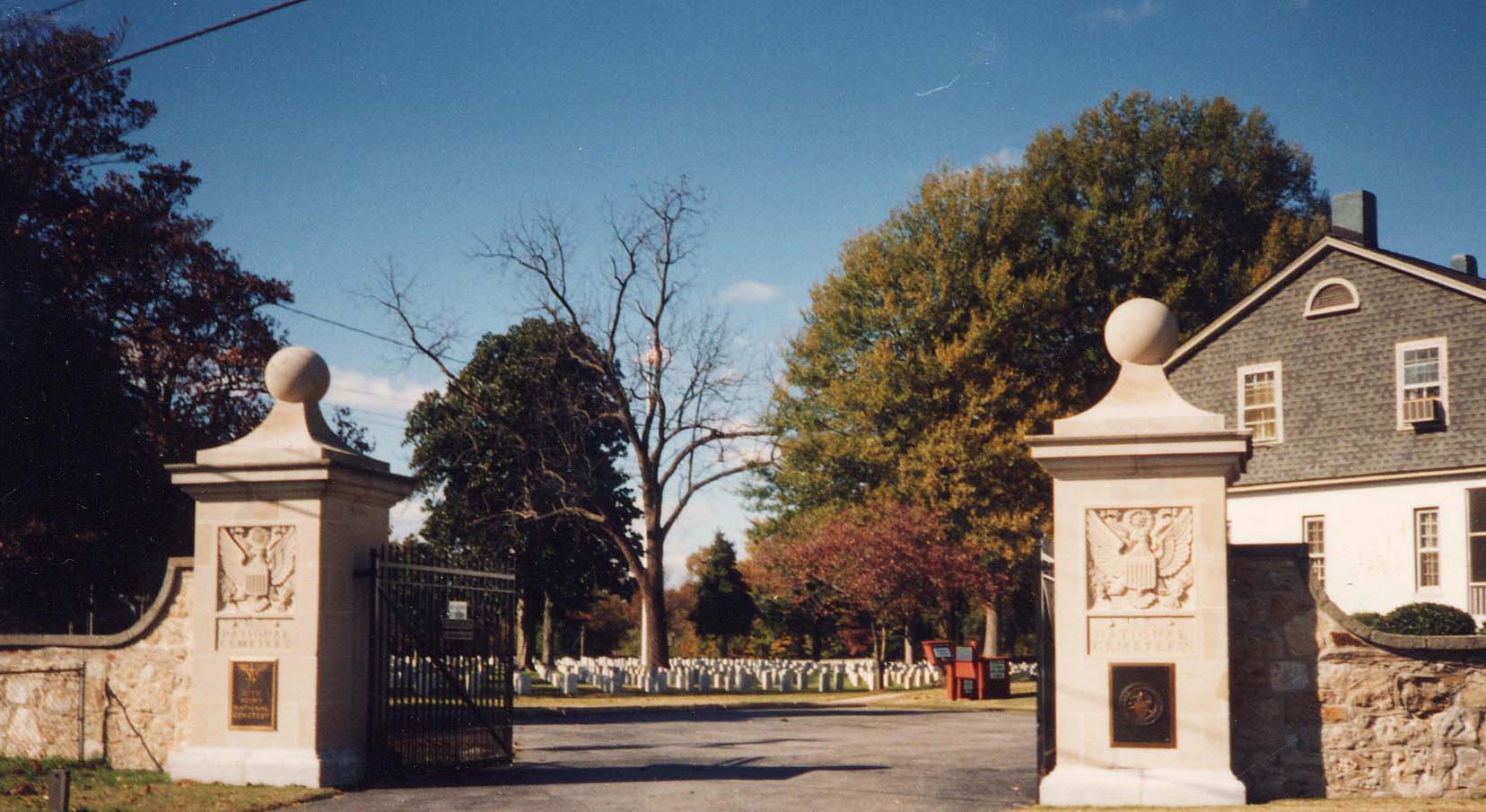|
City Point National Cemetery
10th Avenue and Davis Street
Hopewell, VA 23860
Phone: (804) 795-2031 or 2278
FAX: (804) 795-1064
|
Office Hours:
Monday thru Friday 7:00 a.m. to 4:30 p.m.
Closed federal holidays except Memorial Day and Veterans Day.
Visitation Hours:
Open daily from dawn to dusk.
|
|

|
Burial Space: This cemetery is closed to new interments. However, space may be available in the same gravesite for eligible family members.
Acreage: 6.7
Number of Interments
Thru Fiscal Year 2007: 6,925
General Information Kiosk on Site? No
Floral/Ground Regulations
|
|
Directions from nearest airport:
Richmond International Airport is approximately four miles east of Richmond's city limits. Travel west on Route 60 to Laburnum Avenue and take a left. Go to Route 5 and take a left. Take 295 south. Exit at Hopewell exit (Route 10). Follow Route 10 to 10th Avenue and take a right. Cemetery is at the end of the street on the corner of 10th Avenue and Davis Street.
|
GENERAL INFORMATION
The Hampton National Cemetery manages this cemetery. You may contact the director at the number listed above.
Military Funeral Honors
U.S. Air Force - (757) 764-7181
U.S. Army - (703) 696-3237
U.S. Coast Guard - (757) 398-6390
U.S. Marine Corps - (717) 770-4524
U.S. Navy - (757) 322-2817
back to top
HISTORICAL INFORMATION
City Point National Cemetery is located in Prince George County, Va., on the south bank of the Appomattox River. At the confluence of the James and Appomattox rivers, City Point was a vital transportation center for railroads such as the Norfolk and Petersburg Railroad, and was a well-established inland port on the James River and Kanawha Canal at the onset of the Civil War. City Point's transportation advantages and proximity to Richmond, the longest-enduring capital of the Confederacy, led Union General Ulysses S. Grant to establish a supply depot for his army here.
In the last year of the Civil War, Union troops, artillery and all manner of supplies were amassed at City Point in preparation for Grant's final assaults to capture Petersburg-another key communications center-and Richmond. From June 1864 until April 1865, the relentless Union advances and the Confederate's stubborn and often-desperate defense tactics resulted in many wounded and dead who were transported to City Point and other regional hospitals. Seven hospitals in City Point administered most of the care for the injured and mortally wounded.
Casualties were originally interred in burial grounds near the hospitals, and later they were reinterred at City Point National Cemetery. Through the years, additional burial sites from various Civil War battles have been discovered as local construction projects, such as subdivision development and road widening were made near the cemetery. Many of these remains-both Union and Confederate-were reinterred at City Point National Cemetery. Unlike other Civil War-era national cemeteries in the Richmond area, here the number of known interments exceeds unknowns. Reinterments include remains from another City Point burial ground, Point of Rocks cemetery (Chesterfield County), and Harrison's Landing (Charles City County). City Point National Cemetery was listed on the National Register of Historic Places in 1995.
According to an 1871 report, the superintendent's lodge at that time was a "small wooden cottage, in poor condition" and the cemetery lot was enclosed by a wooden picket fence. Sometime afterward, City Point became one of many early national cemeteries with sturdy Victorian superintendent lodges constructed according to a design by U.S. Quartermaster General Montgomery C. Meigs.
In 1922, four late-19th century buildings stood on the cemetery grounds: the superintendent's lodge; a four-room brick outbuilding that served as a wagon shed, coalhouse, stable, and workshop; a well house; and a public restroom. During 1928, the original Meigs lodge and all other structures were demolished. By December 1928, construction of a new Dutch Colonial style superintendent's lodge and service outbuilding had been completed. The cemetery is enclosed by a 19th century uncoursed fieldstone wall and wrought-iron gates. City Point National Cemetery was listed on the National Register of Historic Places in 1995.
Monuments and Memorials
The Army of the James Monument is a large, 20-foot high white marble memorial erected in memory of the dead of the Army of the James. The monument was constructed under the direction of Major General B.F. Butler, commander of the Army of the James from April 1864 to January 1865.
back to top
NOTABLE PERSONS
back to top
FLORAL/GROUNDS REGULATIONS
Cemetery policies are conspicuously posted and readily visible to the public.
Natural cut flowers may be placed on graves at any time of the year. They will be removed when they become unsightly or when it becomes necessary to facilitate cemetery operations.
Artificial flowers and potted plants will be permitted on graves during periods when their presence will not interfere with grounds maintenance. As a general rule, artificial flowers and potted plants will be allowed on graves for a period extending 10 days before through 10 days after Easter Sunday and Memorial Day.
Christmas wreaths, grave blankets and other seasonal adornments may be placed on graves from Dec. 1 through Jan. 20. They may not be secured to headstones or markers.
Permanent plantings, statues, vigil lights, breakable objects and similar items are not permitted on the graves. The Department of Veterans Affairs does not permit adornments that are considered offensive, inconsistent with the dignity of the cemetery or considered hazardous to cemetery personnel. For example, items incorporating beads or wires may become entangled in mowers or other equipment and cause injury.
Permanent items removed from graves will be placed in an inconspicuous holding area for one month prior to disposal. Decorative items removed from graves remain the property of the donor but are under the custodianship of the cemetery. If not retrieved by the donor, they are then governed by the rules for disposal of federal property.
back to top
|


